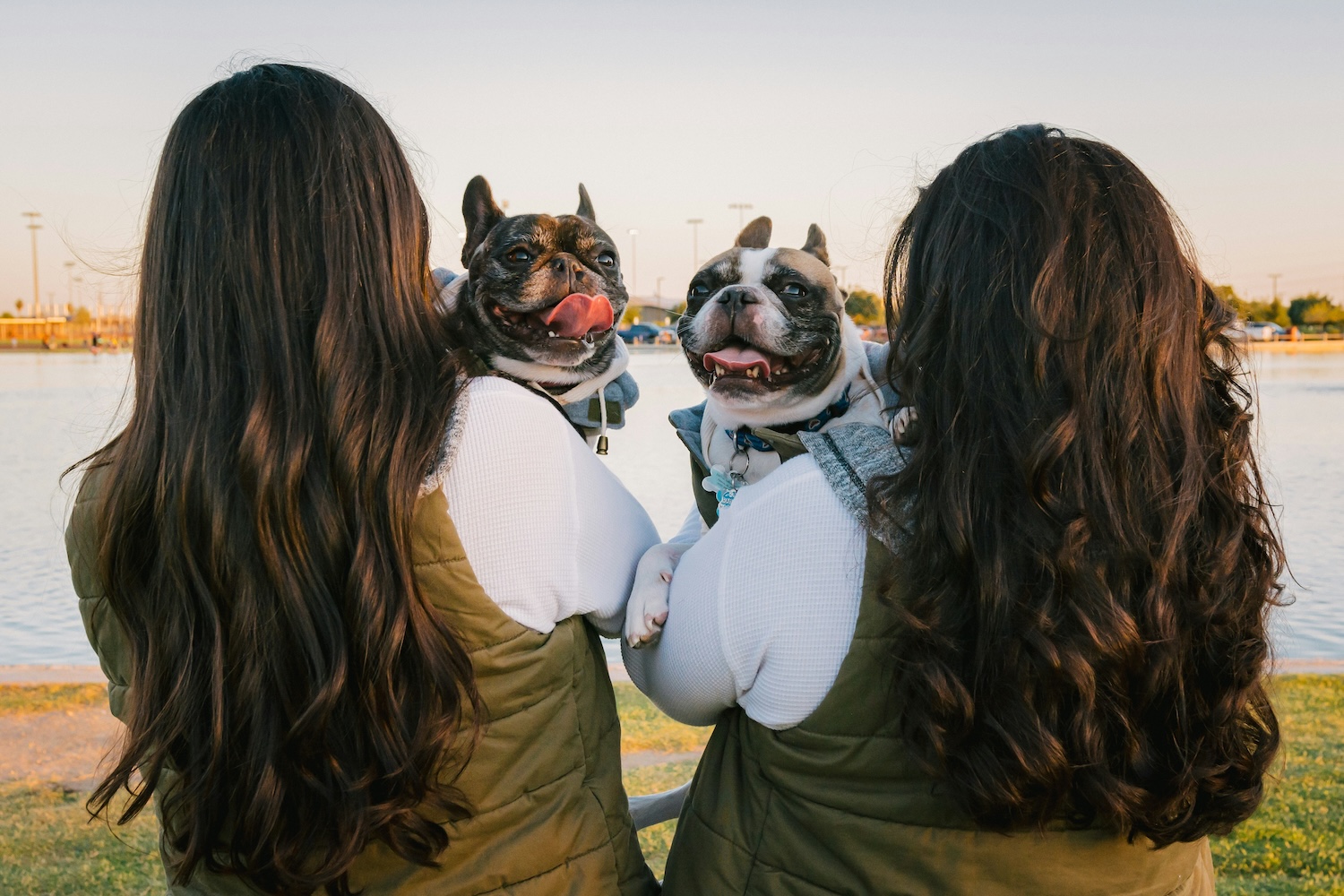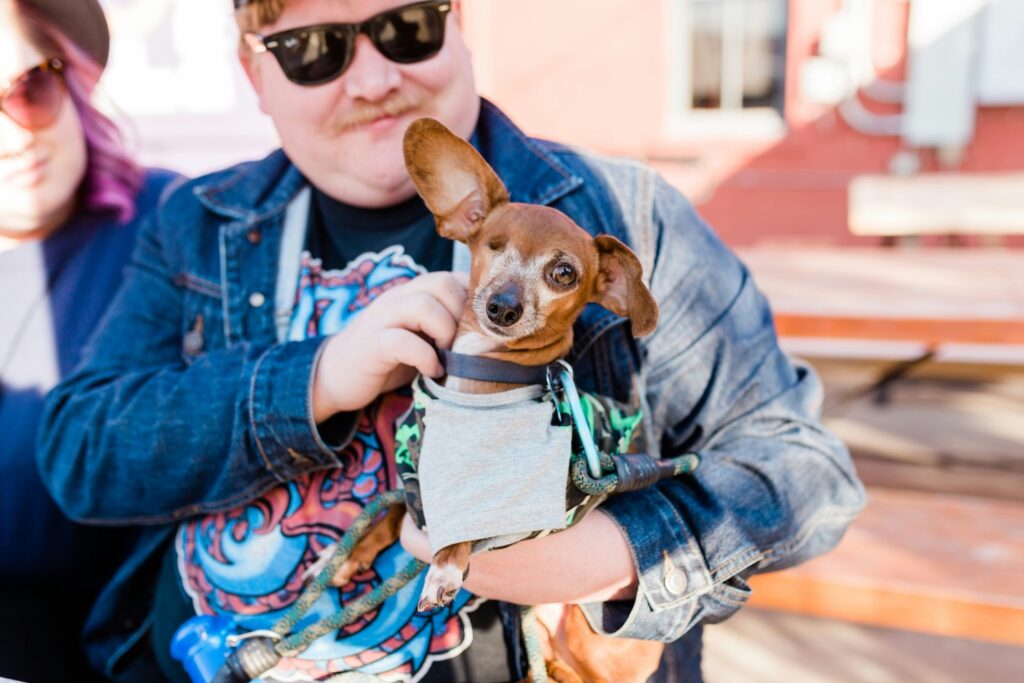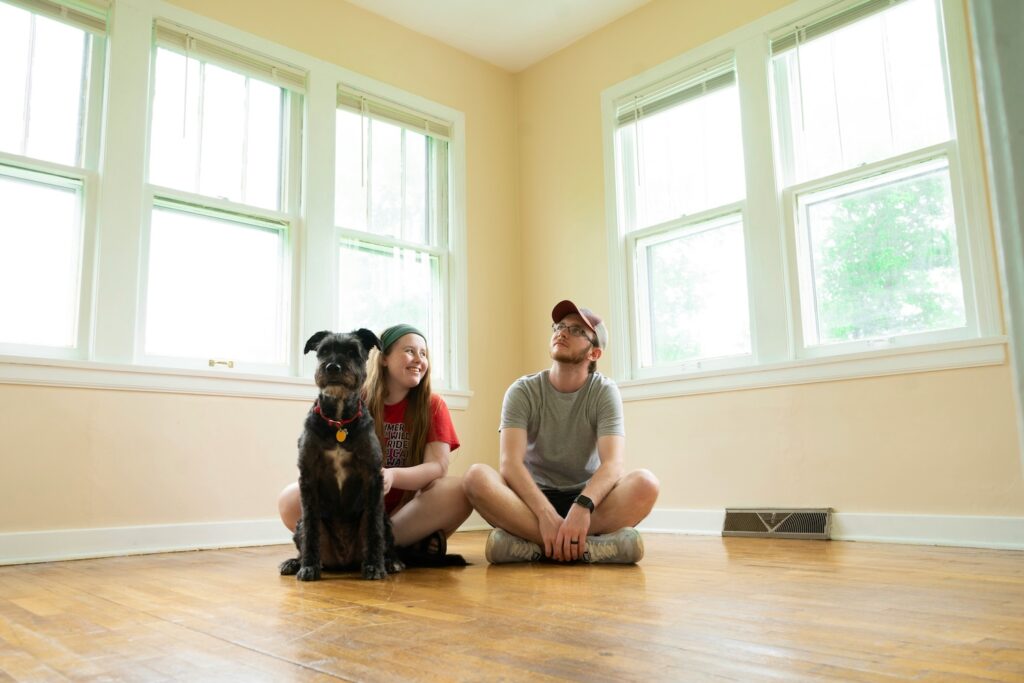You know that moment when you’re watching your dog play at the park, tail wagging as they chase another dog in perfect harmony, and you think: “My dog needs a friend like this.” The image is compelling. Two dogs curled up together on the couch, providing each other comfort when you’re at work, becoming instant best mates who make each other’s lives richer and more complete.
Here’s what they don’t tell you about that beautiful vision: it’s not guaranteed. In fact, it’s not even the most likely outcome.
The reality of adding a second dog is far more complex than the Instagram-worthy moments suggest. Most multi-dog households don’t feature dogs who are genuinely bonded companions. Instead, they’re home to dogs who’ve learned to peacefully coexist, like respectful housemates who share space without necessarily being friends. And you know what? That’s actually a success story.
The gap between expectation and reality is where many second-dog additions go wrong. When owners expect instant friendship and encounter normal adjustment challenges instead, they often give up too quickly or manage the situation in ways that create more problems. Understanding what you’re really undertaking, how dogs actually relate to each other, and what success truly looks like will set you up for the patient, systematic approach that multi-dog harmony requires.
The Relationship Spectrum: Beyond Best Friends or Enemies
Let’s start with some data that might surprise you. Research observing companion dogs in a daycare setting over a full year identified several distinct relationship types, and the results challenge the common narrative about canine friendships.
The largest group? Dogs that were either non-interactive or actively avoided each other. These pairs simply didn’t engage much at all. They went about their business independently, occasionally acknowledging each other’s presence but showing no particular interest in social contact.
True affiliative relationships, characterised by dogs who actively sought each other out for play, rest, and companionship, represented a much smaller portion of the observed pairs. Even among dogs who did form positive relationships, many fell into what researchers called “formal dominance” patterns, where one dog consistently deferred to the other. This wasn’t about aggression or conflict; it was a low-energy way of preventing competition over resources.
This research reveals something crucial: peaceful coexistence is not only normal, it’s the most common successful outcome in multi-dog households. Dogs who ignore each other, who have their own favourite spots and routines, who occasionally interact but don’t seek each other out constantly, represent a harmonious household. The pressure to create canine best friends often leads owners to force interactions that dogs would naturally prefer to avoid.
The Health Case: Why Companionship Matters
Before we dive into the complexities, there’s compelling evidence for why you might want to persist through these challenges. The Dog Aging Project, studying over 21,000 companion dogs, found that dogs living with other animals were rated by their owners as significantly healthier than single-pet households. The social support factor was five times more influential on health outcomes than financial factors like household income.
However, this benefit comes with a critical caveat: the study noted exceptions in households where pets were aggressive or abusive toward one another. The health benefits only apply when the social environment is positive and low-stress. A poorly managed multi-dog household where conflict is common will likely have the opposite effect, increasing stress levels and potentially harming both dogs’ wellbeing.
This creates a high-stakes scenario. Success brings genuine health benefits, but failure can be detrimental to everyone involved.
Getting the Foundation Right: Selection Beyond the Cute Factor
The most critical decision happens before the second dog even comes home: choosing a compatible companion. This isn’t about finding two dogs you love; it’s about finding a dog your current dog can live with comfortably.
Temperament trumps everything. Individual personality matters far more than breed, age, or sex when predicting compatibility. You’re looking for a dog whose social style complements your resident dog’s approach to life. A confident, socially assertive dog might overwhelm an anxious, sensitive type. A high-energy, play-focused dog could be exhausting for a calm, independent personality.
This requires honest assessment of your current dog. A dog who consistently shows fear, stress, or defensive behaviour around other dogs is telling you something important. Adding a housemate won’t cure these issues and often makes them worse. The goal isn’t to fix your first dog with a second one; it’s to enhance an already stable situation.
Age gaps help reduce competition. RSPCA guidance suggests at least three years between dogs to minimise status-related friction. A teenage dog navigating their own behavioural development while living with another teenager creates a complex dynamic that’s challenging to manage. An adult dog who’s settled in their routine is often more tolerant of a younger dog’s energy.
Mixed-sex pairings tend to be more stable than same-sex combinations, according to observational studies. Male-female pairs show higher rates of affiliation and lower rates of conflict than male-male or female-female combinations. However, this isn’t a guarantee, and individual temperament still matters more than demographics.
Size disparities require careful consideration. A size difference doesn’t automatically mean incompatibility, but it does mean increased vigilance. Well-intentioned play from a larger dog can injure a smaller one, even when both dogs have good intentions. Energy levels often correlate with size, creating another potential mismatch.
Here’s what the research tells us about breed influences: they matter less than you think. One major study found that breed explains only about 9% of the variation in individual dog behaviour. Early socialisation, training, and life experiences have far more influence on personality than genetic background. Use breed information as a loose guide for energy and drive, but don’t assume it predicts how any individual dog will behave.
Where to Assess Compatibility
Once you understand what you’re looking for, where do you actually evaluate these factors? Reputable rescue organisations often allow meet-and-greets in neutral locations and can provide detailed behavioural assessments based on foster care observations. Ethical breeders should welcome visits where you can observe the dog’s interaction with other animals and their response to new situations.
Avoid making decisions based solely on photos or brief meetings in high-stress environments like pet shops or crowded adoption events. The goal is to see how both dogs behave in calm, controlled settings that allow their true personalities to emerge.
The Integration Protocol: Engineering Success
Once you’ve selected a potentially compatible companion, the integration process begins. This isn’t about hoping for the best; it’s about systematically building positive associations while preventing negative ones.
Phase One starts in neutral territory. Never bring a new dog directly into your home or garden. These are your resident dog’s established territories, and introducing a stranger here immediately triggers defensive instincts. Instead, arrange for both dogs to meet on neutral ground with two adult handlers.
The parallel walk is your primary tool. Start with both dogs walking in the same direction but at least 10 metres apart. You’re not aiming for interaction yet; you’re simply allowing them to become aware of each other in a low-stress context. Both handlers should carry high-value treats and reward calm, relaxed behaviour.
Watch for loose body language, curved approaches, and natural, relaxed movement. Red flags include prolonged staring, body stiffening, raised hackles, or excessive pulling toward the other dog. If you see tension, increase distance until both dogs are comfortable again.
Only after successful parallel walking should you allow brief, controlled greetings. Keep these to three seconds initially, then call both dogs away cheerfully and continue walking. Short, positive interactions that end before arousal levels spike set the foundation for longer, successful encounters later.
Phase Two manages the home transition carefully. Remove all potential conflict triggers before the new dog enters. This means picking up toys, bones, food bowls, and even favourite beds. You’ll reintroduce these items gradually once the relationship is established.
Bring the new dog into the house first while the resident dog waits outside. This reduces territorial pressure and allows the newcomer to explore without social stress. When the resident dog comes inside, both should remain on leashes for control.
Phase Three acknowledges the marathon nature of adjustment, and this is where understanding realistic timelines becomes crucial. The rescue community’s “Rule of 3s” provides a framework: three days for initial decompression, three weeks to start settling in, three months to truly feel at home.
During the first three days, expect both dogs to be stressed. The new dog may be shut down, overly cautious, or conversely, overly excited and unable to settle. You might see house-training accidents, refusal to eat, or hiding behaviour. The resident dog may be watchful, potentially guarding resources they’ve never protected before, or showing mild avoidance of their usual routines.
The first three weeks see personalities emerging, and this is often when owners panic unnecessarily. The new dog becomes more confident, which might mean they start testing boundaries they respected initially. A dog who was submissive during week one might begin claiming the sunny spot by the window or asserting themselves during play. Resource guarding may surface as the newcomer feels secure enough to claim valuable items. Meanwhile, the resident dog might show signs of jealousy or competition for attention, pushing between you and the new dog during affection sessions.
By three months, you’re seeing established relationship patterns. The initially submissive dog might have settled into confident routine claiming of certain spaces, while the resident dog has adapted their own patterns around the newcomer. Play styles have been negotiated, with both dogs understanding each other’s limits and preferences. This is when you can evaluate whether the long-term dynamic is working.
Throughout this entire process, supervision is non-negotiable. When you cannot watch both dogs actively, they must be separated using crates, baby gates, or closed doors. This isn’t punishment; it’s preventing the negative interactions that could set the entire integration back weeks.
Managing the New Ecosystem: Resources, Relationships, and Long-term Dynamics
Adding a second dog transforms your simple human-dog relationship into a complex triangle of interactions. Success requires proactive management of this new dynamic, particularly around resources that dogs find valuable. But it also requires understanding how these management strategies serve dual purposes: preventing conflict in the short term and preserving your individual relationships with each dog in the long term.
Food separation is non-negotiable, especially initially. Dogs should be fed in separate rooms with doors closed, or in individual crates. Even empty bowls can trigger guarding behaviour, so pick up all feeding equipment immediately after meals.
Space management prevents crowding conflicts. Doorways, hallways, and stairs become potential pressure points where dogs might feel cornered. Baby gates can control traffic flow and give each dog escape routes. Provide multiple comfortable resting areas so neither dog feels they must compete for prime spots.
Human attention becomes a managed resource too. Dogs often guard their owners’ affection, growling when another dog approaches during petting sessions. Rather than pushing the approaching dog away (which teaches the first dog that growling works), calmly end the interaction and move away. This prevents reinforcing possessive behaviour while keeping interactions positive.
The critical principle here is listening to what dogs tell you. A growl is communication, not defiance. It’s your dog saying “I’m uncomfortable with this situation.” Punishing the growl teaches dogs not to give warnings, potentially leading to bites that seem to come “out of nowhere.” Instead, increase distance, manage the environment better, and address the underlying anxiety about resource scarcity.
These management strategies aren’t temporary. Many owners assume that once the initial integration period passes, they can relax these practices. However, continuing separate feeding, individual crate time when unsupervised, one-on-one training sessions, and separate walks serves a crucial long-term purpose: maintaining strong individual relationships with each dog.
Without this ongoing structure, you risk what trainer Susan Garrett calls “Second Dog Syndrome.” In single-dog homes, the human is often the centre of the dog’s social world. When a second dog arrives, particularly if it’s a puppy, there’s a risk that the two dogs will bond more strongly with each other than with their human family. The dogs look to each other for cues and companionship, becoming a “pack of two” that doesn’t include the humans who care for them.
Individual attention prevents this dynamic. When each dog has dedicated one-on-one time with you, they maintain their human bonds rather than becoming overly dependent on each other. This structure allows both the dog-dog and human-dog relationships to thrive in a balanced ecosystem.
Protecting Your First Dog’s Wellbeing
In the excitement of a new addition, it’s easy to overlook the profound impact on your resident dog. Their predictable world has been turned upside down. Routine is disrupted, territory is shared, and attention is divided. Even social, friendly dogs can find this stressful.
Behavioural changes are common and often temporary. Previously house-trained dogs might have accidents. Dogs who never destroyed anything might start chewing furniture. A dog who always slept peacefully might become restless or clingy. These are typically signs of adjustment stress, not permanent personality changes.
Here’s a crucial myth to dispel: getting a second dog will not cure separation anxiety in your first dog. Separation anxiety is usually an attachment issue specific to the human, not general loneliness. Adding another dog often has no effect on the anxiety and can sometimes make it worse by increasing overall stress levels. In worst-case scenarios, the anxious behaviour can transfer to the new dog, leaving you with two anxious animals instead of one cured one.
Protecting your first dog means maintaining their routine as much as possible, ensuring they have dedicated one-on-one time with you, and providing secure spaces where the new dog isn’t allowed to bother them.
When Things Don’t Work: Recognising Incompatibility
Despite careful selection and flawless management, some pairings simply aren’t viable. Recognising the signs of genuine incompatibility versus normal adjustment challenges can prevent prolonged stress for everyone involved.
Red flags include escalating aggression over time rather than improvement, fights that result in injury, complete failure of normal social signalling (where one dog continues attacking despite clear submission from the other), and chronic fear that prevents one dog from normal activities like eating, sleeping, or moving freely through the house.
If conflicts become more frequent or intense over time, if one dog lives in constant fear, or if you find yourself unable to safely manage both dogs despite professional help, rehoming may be the kindest option for all involved. This isn’t failure; it’s prioritising welfare over ego.
The Australian Reality: Legal and Financial Considerations
Before falling in love with the idea of two dogs, understanding the practical constraints is essential.
Legal requirements vary by location but follow consistent patterns. All dogs over three months must be microchipped and registered with your local council annually. Most councils limit residential properties to two dogs without special permits. If you already have one dog and live in an area with a two-dog limit, you’re fine. But if you have two dogs and want a third, or live in an area with a one-dog limit, you’ll need to apply for an excess animal permit before acquiring another dog. This process typically involves fees and property inspections, and permits can be denied.
For apartment dwellers, strata considerations are complex but not insurmountable. Following the landmark Cooper case in NSW, strata schemes can no longer enforce blanket pet bans. However, they can refuse permission for specific animals that cause “unreasonable interference” with other residents. Strata schemes typically have rules about pet numbers, sizes, and approval processes.
The key is understanding your scheme’s specific by-laws and following official application processes. Don’t assume permission; get it in writing before committing to a second dog. For renters, landlord permission remains required regardless of strata rules.
The financial reality requires honest assessment. Annual costs for two dogs range from approximately $4,000 to over $11,000, effectively doubling most pet-related expenses:
Essential Annual Costs (Two Dogs):
- Food: $1,600-$4,000 (varies significantly by size and diet quality)
- Routine veterinary care: $180-$1,260 (vaccinations, check-ups)
- Parasite prevention: $240-$650 (flea, tick, heartworm treatment)
- Council registration: $80-$400 (varies by council and desexing status)
Variable Costs:
- Pet insurance: $1,440-$2,880 annually (but essential given emergency risks)
- Grooming: $260-$1,680 (breed-dependent)
- Toys, treats, gear replacement: $200-$700
Emergency Costs (Per Incident): Emergency veterinary bills represent the highest financial risk. Single incidents can cost $5,000-$40,000 for serious conditions like foreign object ingestion surgery or cancer treatment. With two dogs, you’re exposed to this risk twice over.
Pet insurance mitigates these costs but adds significant annual expense. The alternative is setting aside emergency funds, but this requires discipline and substantial savings given the potential costs involved.
The Path Forward: Realistic Expectations
Adding a second dog can enhance your first dog’s health and wellbeing, provide you with twice the companionship, and create a harmonious household where dogs coexist peacefully or even develop genuine friendship. These outcomes are possible and worth pursuing for families prepared to undertake the process thoughtfully.
Success requires abandoning the fantasy of instant best friends and embracing a systematic, patient approach grounded in understanding how dogs actually relate to each other. It means prioritising compatibility over appearance, implementing careful introduction protocols, maintaining long-term management strategies, and celebrating peaceful coexistence as the victory it truly is.
The decision to add a second dog shouldn’t be taken lightly or approached casually. It’s a significant commitment that will alter your household dynamics permanently. But for owners willing to do the work, equipped with realistic expectations, and committed to both dogs’ individual wellbeing, it can be one of the most rewarding decisions you make for your canine family.
The key is remembering that you’re not just getting a friend for your dog; you’re creating a carefully managed ecosystem where every member, human and canine, can thrive.



